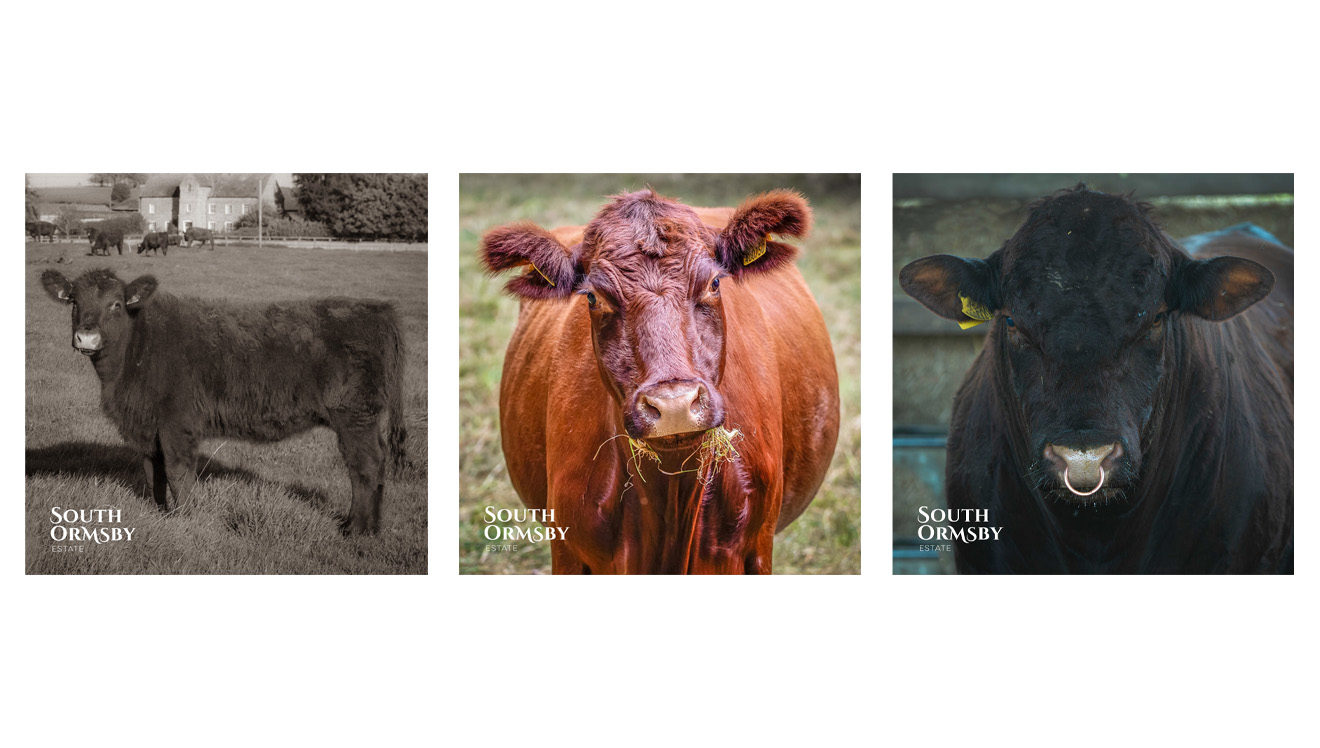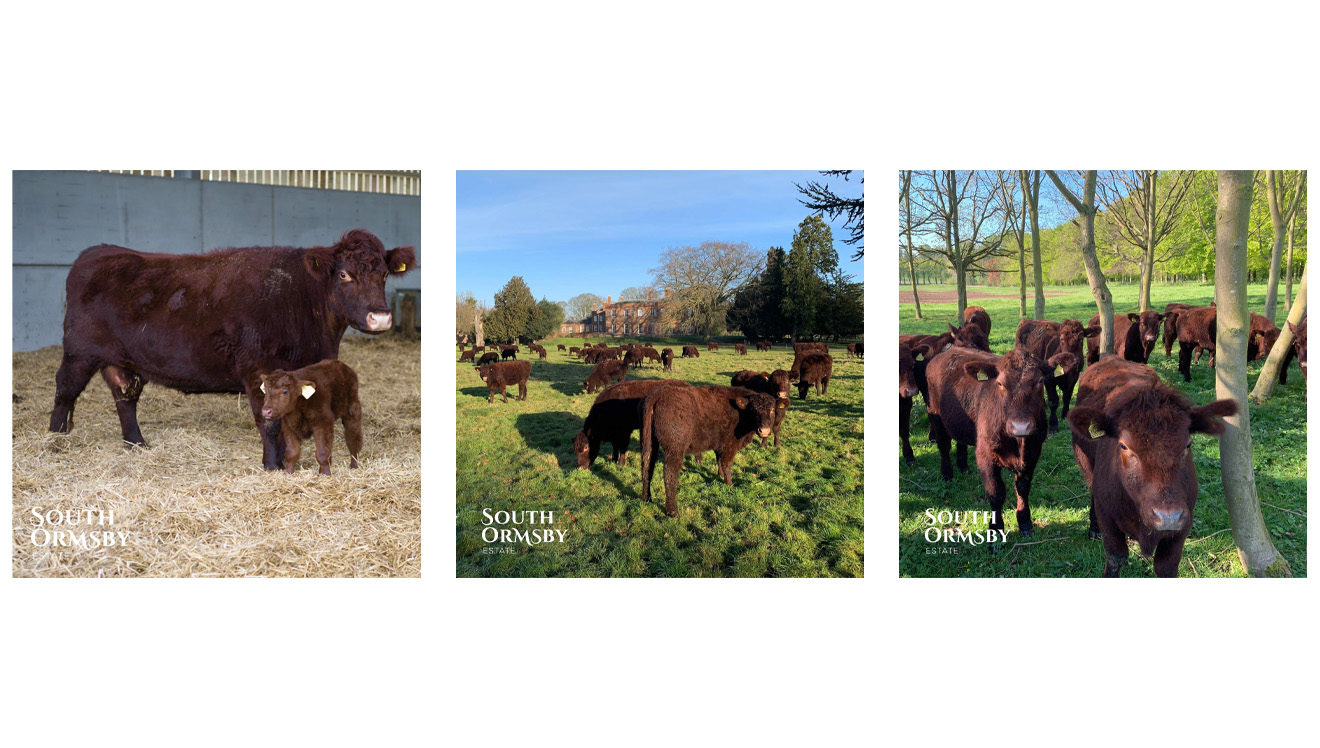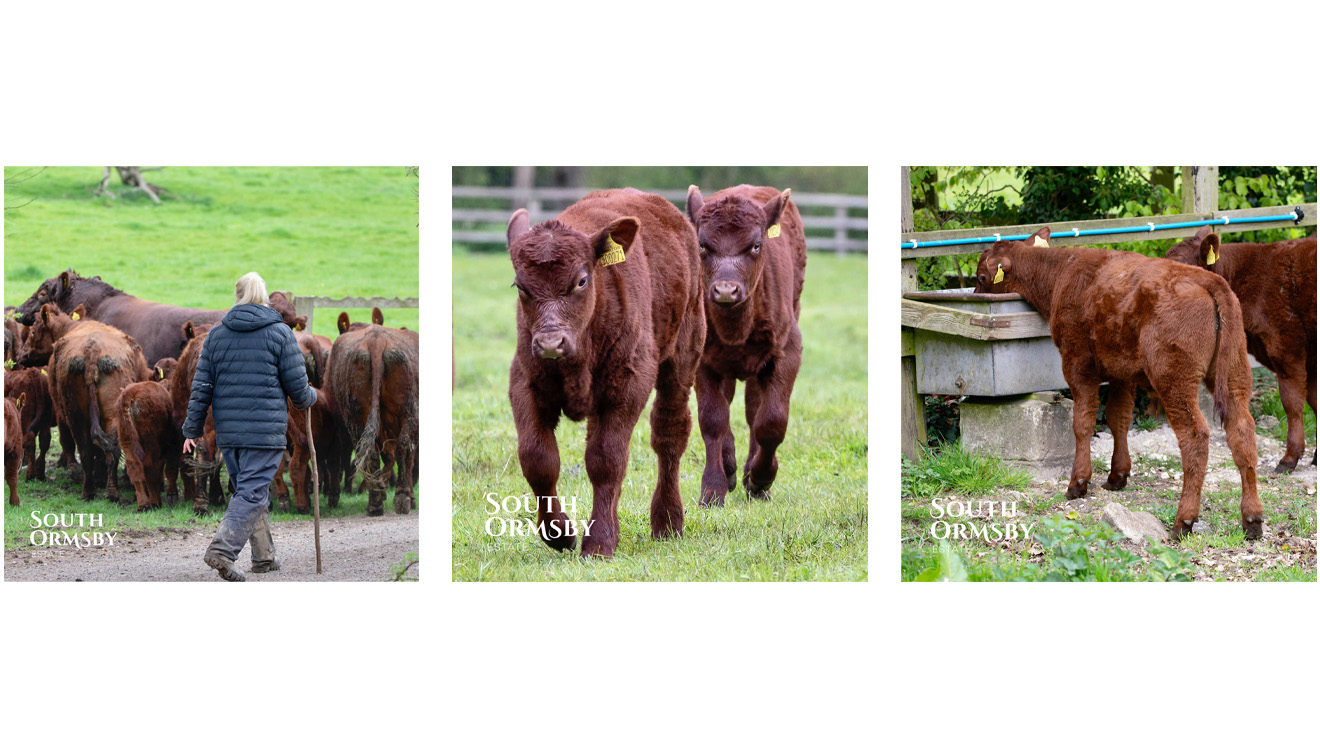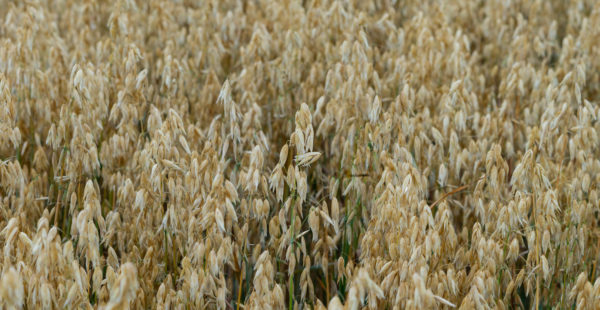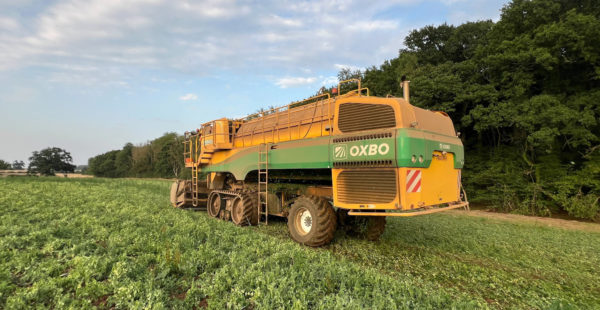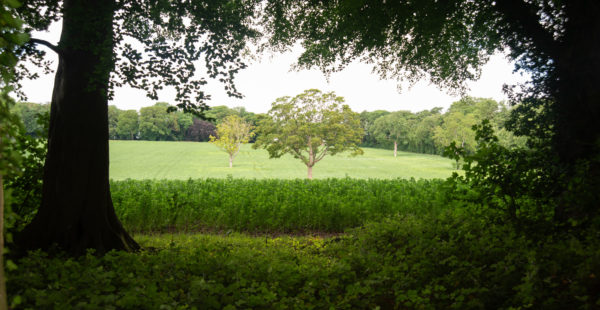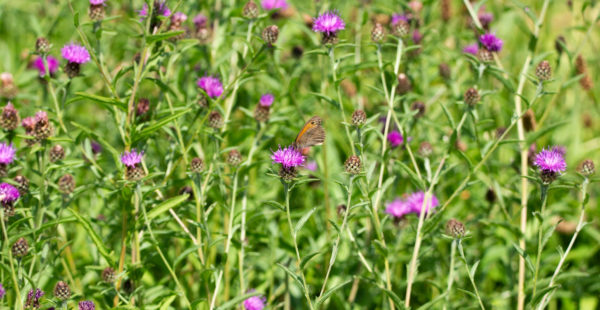Lincoln Reds – Past, Present & Future
Our grass-fed Lincoln Red beef is well known for its superior taste and quality. Read on to discover the full and fascinating story of how this charismatic native breed is helping to revitalise biodiversity, traditional rural know-how and our region’s economy.
LIFE ON THE PASTURE
South Ormsby Estate boasts one of the biggest herds of pedigree, original Lincoln Red cattle. We currently care for just under 400 head of cattle and we’re working towards a herd strength of 700-800. This thriving herd’s 2021 calving season gave us 105 new residents and we’re hoping for 170 in 2022.
Given that the herd mustered only 25 cows at the turn of the century, this is good news for the breed and for the Lincolnshire Wolds. We need 700-800 Reds to maintain our landscape in its time-honoured form. The Reds fertilise the land the old-fashioned way and their grazing prevents tree roots from disrupting the tell-tale dips and curves of our medieval villages.
Our young stock live outdoors full-time, all-year round. They graze permanent pasture from March or April to late September, then arable cover crops between October and late December. At this point, the cows come into their winter cattle barn at Keal Yard, ready for the calving season. The rest of the herd remain outdoors and move on to a winter forage crop in the form of standing hay supplemented by haylage in cold snaps. Their winter haylage is sourced entirely from the estate; year-round, the herd is sustained by our land.
In wet weather, the herd moves to the shelter of mature trees where they enjoy munching on leaves, twigs and ivy. In 2022, we’ll begin planting winter shelters for our Lincoln Reds. Within three or four years of growth, these stands of trees will offer more natural shelter for our expanding herd, alongside our flourishing network of hedgerows.
In any given year, the bulls are introduced to the cows and heifers by 14th April. While the breed has a reliable gestation period of nine months and one week, they don’t always conceive in the first month. Our cattle team know they’ll be busy at Keal Yard in the cold and dark of January, February and March. The cows return to the land in March or April, weather permitting. April 2021 was unusually frosty so we had to wait a month or so longer than usual for the life-affirming spectacle of our new calves getting their first taste of lush, spring grass in one of our paddocks.
South Ormsby Estate’s herd enjoys ‘high-health’ status, the highest standard of cattle health that can be registered. Every aspect of our cattle’s life is carefully documented, including age, medication given and family lines. As ours is a historic, pedigree herd, documenting heredity is vital. The age and purity of the breed can be a boon in the calving season, with veterinary assistance required in only 2% of births. With other cattle, commercial cross-breeding aimed at producing larger calves can cause problems for cows lacking the right adaptations.


